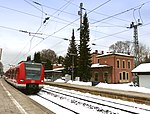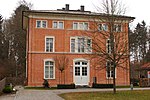Lake Starnberg

Lake Starnberg, or Starnberger See [ˈʃtaʁnbɛʁɡɐ ˌzeː] (listen)) — called Lake Würm, or Würmsee [ˈvʏʁmˌzeː], until 1962 — is Germany's second-largest body of fresh water, having great depth, and fifth-largest lake by area. It and its surroundings lie in three different Bavarian districts, or Landkreise. The lake is property of the state and accordingly managed by the Bavarian Administration of State-Owned Palaces, Gardens and Lakes. Located in southern Bavaria 25 kilometres (16 mi) southwest of Munich, Lake Starnberg is a popular recreation area for the city and, since 1976, one of the wetlands of international importance protected by the Ramsar Convention. The small town of Berg is famous as the site where King Ludwig II of Bavaria was found dead in the lake in 1886. Because of its associations with the Wittelsbach royal family, the lake is also known as Fürstensee (Prince's Lake). It is also mentioned in T. S. Eliot's poem The Waste Land.
Excerpt from the Wikipedia article Lake Starnberg (License: CC BY-SA 3.0, Authors, Images).Lake Starnberg
Geographical coordinates (GPS) Address Nearby Places Show on map
Geographical coordinates (GPS)
| Latitude | Longitude |
|---|---|
| N 47.903888888889 ° | E 11.307222222222 ° |
Address
82541
Bavaria, Germany
Open on Google Maps








